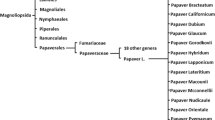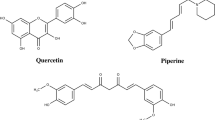Abstract
Calophyllum brasiliense (Cambes) produces calanolide secondary metabolites that are active against human immunodeficiency virus type 1 reverse transcriptase. In this study, it was demonstrated that plant tissue culture is a useful technique for producing these metabolites. Different concentrations and combinations of plant growth regulators were tested in leaf and seed explants to establish callus cultures capable of producing calanolides. Highest callus induction (100%) was achieved when seed explants were incubated in a medium consisting of 8.88 μM 6-benzyladenine and 20 μM picloram. Highest callus induction (80.67%) was observed when leaf explants were incubated on a medium consisting of 0.46 μM kinetin and 5.37 μM α-naphthaleneacetic acid. High-performance liquid chromatography quantitative analysis revealed higher calanolide B and calanolide C production in calluses from seed explants than those developed from leaves (309.25 vs. 8.70 mg kg−1 for calanolide B; 117.70 vs. 0.0 mg kg−1 for calanolide C).


Similar content being viewed by others
Abbreviations
- ANOVA:
-
Analysis of variance
- BA:
-
6-Benzyladenine
- DWAD:
-
Dual wavelength absorbance detector
- DW:
-
Dry weight
- HIV-1 RT:
-
Human immunodeficiency virus type 1 reverse transcriptase
- HPLC:
-
High-performance liquid chromatography
- IBA:
-
Indole-3-butyric acid
- KIN:
-
Kinetin
- NAA:
-
α-Naphthaleneacetic acid
- PGR(s):
-
Plant growth regulator(s)
- PIC:
-
Picloram
- PVP:
-
Polyvinylpyrrolidone
- RT :
-
Retention time
- TDZ:
-
Thidiazuron
- WPM:
-
Woody plant medium
- 2,4-D:
-
2,4-Dichlorophenoxyacetic acid
References
Benjamins R, Scheres B (2008) Auxin: the looping star in plant development. Annu Rev Plant Biol 59:443–465
Bhojwani SS, Razdan MK (1983) Plant tissue culture. Elsevier Science, Amsterdam
Bourgaud F, Gravot A, Milesi S, Gontier E (2001) Production of plant secondary metabolites: a historical perspective. Plant Sci 161:839–851
Dornenburg H, Knorr D (1995) Strategies for the improvement of secondary metabolite production in plant cell cultures. Enzyme Microb Tech 17:674–684
Gamborg OL, Miller RA, Ojima K (1968) Nutrient requirements of suspension cultures of soybean root cells. Exp Cell Res 50:151–158
Harnett SM, Oosthuizen V, Van de Venter M (2005) Anti-HIV activities of organic and aqueous extracts of Sutherlandia frutescens and Lobostemon trigonus. J Ethnopharmacol 96:113–119
Hay AE, Guilet D, Morel C, Larcher G, Macherel D, Le Ray AM, Litaudon M, Richomme P (2003) Antifungal chromans inhibiting the mitochondrial respiratory chain of pea seeds and new xanthones from Calophyllum caledonicum. Planta Med 69:1130–1135
Huerta-Reyes M, Basualdo MC, Abe F, Jiménez-Estrada M, Soler C, Reyes-Chilpa R (2004) HIV-1 Inhibitory compounds from Calophyllum brasiliense leaves. Biol Pharm Bull 27:1471–1475
Kashman Y, Gustafson KR, Fuller RW, Cardellina IIJH, McMahon JB, Currens MJ, Buckheit RW, Hughes SH, Cragg GM, Boyd MR (1992) The calanolides, a novel HIV inhibitory class of coumarin derivatives from the tropical rainforest tree, Calophyllum lanigerum. J Med Chem 35:2735–2743
Lloyd G, McCown B (1980) Commercially feasible micropropagation of mountain laurel, Kalmia latifolia, by use of shoot tip culture. Comb Proc Int Plant Prop Soc 30:421–427
McKee TC, Fuller RW, Covington CD, Cardellina JH, Gulakowski RJ, Krepps BL, McMahon JB, Boyd MR (1996) New Pyranocoumarins Isolated from Calophyllum lanigerum and Calophyllum teysmanniil. J Nat Prod 59:754–758
Mi-Jeong A, Kee-Dong Y, Chul YK, So-Young M, Yong-ung K, Hyun JK, Jeong HK, Cha-Gyun S, Chong-Kyo L, Tae GK, Seung HK, Hoon H, Jinwoong K (2002) Inhibition of HIV-1 reverse transcriptase and HIV-1 integrase and antiviral activity of Korean seaweed extracts. J Appl Phycol 14:325–329
Mulabagal V, Tsay HS (2004) Plant cell cultures - an alternative and efficient source for the production of biologically important secondary metabolites. Int J Appl Sci Eng 2:29–48
Murashige T, Skoog F (1962) A revised medium for rapid growth and bioassays with tobacco tissue cultures. Physiol Plantarum 15:473–497
Murthy BNS, Murch SJ, Saxena PK (1998) Thidiazuron: a potent regulator of in vitro plant morphogenesis. In Vitro Cell Dev Biol-Plant 34:267–275
Nair LG, Seeni S (2003) In vitro multiplication of Calophyllum apetalum (Clusiaceae), an endemic medicinal tree of the western ghats. Plant Cell Tiss Organ Cult 75:169–174
Ovenden SPB, Yu J, Wan SS, Sberna G, Murray TR, Rhodes D, Cox S, Coates J, Neville GW, Meurer-Grimes BM (2004) Globoidnan A: a lignan from Eucalyptus globoidea inhibits HIV integrase. Phytochemistry 65:3255–3259
Pawar KD, Thengane SR (2009) Influence of hormones and medium components on expression of dipyranocoumarins in cell suspension cultures of Calophyllum inophyllum L. Process Biochem 44:916–922
Pawar KD, Joshi SP, Bhide SR, Thengane SR (2007) Pattern of anti HIV dypiranocoumarin expression in callus cultures of Calophyllum inophyllum Linn. J Biotechnol 130:346–353
Ramachandra RS, Ravishankar GA (2002) Plant cell culture: chemical factories of secondary metabolites. Biotechnol Adv 20:101–153
Reyes-Chilpa R, Estrada ME, Ramírez AT, Amekraz B, Aumelas A, Jankowski CK, Vázquez TM (2004) Cytotoxic effects of mammea type coumarins from Calophyllum brasilense. Life Sci 75:1635–1647
Smetanska I (2008) Production of secondary metabolites using plant cell cultures. Adv Biochem Eng Biotechnol 111:187–228
Staba EJ (1982) Plant tissue culture as a source of biochemicals. CRC Press, Florida
Taiz L, Zeiger E (2006) Plant physiology. Sinauer Associated, USA
Thengane SR, Bhosle SV, Deodhar SR, Pawar KD, Kulkarni DK (2006) Micropropagation on Indian laurel (Calophyllum inophyllum), a source of anti-HIV compounds. Curr Sci 90:1393–1397
UNAIDS (2008) Report on the global AIDS epidemic. Available via http://www.unaids.org/en/KnowledgeCentre/HIVData/GlobalReport/2008/2008_Global_report.asp. Accessed 10 March 2009
Vanneste S, Friml J (2009) Auxin: trigger for change in plant development. Cell 136:1005–1016
Whitehead IM, Threlfall DR (1992) Production of phytoalexins by plant tissue cultures. J Biotechnol 26:63–81
Acknowledgments
The authors thank Dr. Marius Mumbai Massip from Universidad of Barcelona, Spain, and Dr. Arturo Navarro Ocaña from UNAM for their assistance with the HPLC analysis.
Author information
Authors and Affiliations
Corresponding author
Rights and permissions
About this article
Cite this article
Bernabé-Antonio, A., Estrada-Zúñiga, M.E., Buendía-González, L. et al. Production of anti-HIV-1 calanolides in a callus culture of Calophyllum brasiliense (Cambes). Plant Cell Tiss Organ Cult 103, 33–40 (2010). https://doi.org/10.1007/s11240-010-9750-4
Received:
Accepted:
Published:
Issue Date:
DOI: https://doi.org/10.1007/s11240-010-9750-4




